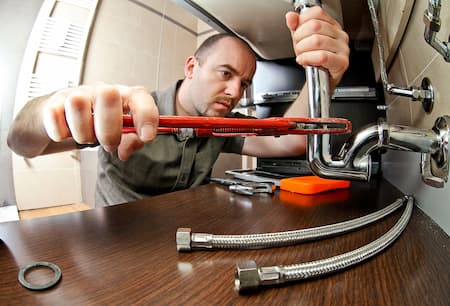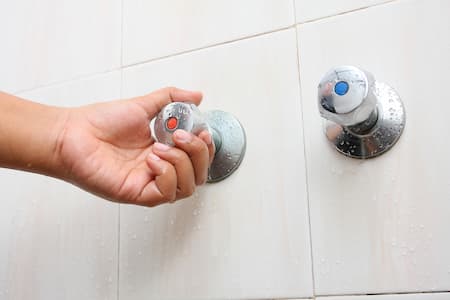
Do You Need A Plumber To Replace A Bathroom Sink In Stockton?
Introduction
Replacing a bathroom sink may seem like a daunting task, especially if you’ve never done it before. The question many homeowners in Stockton ask is: Do you really need a plumber? While hiring bathroom sink plumbers can simplify the process, there are plenty of reasons to consider going the DIY route. In this guide, we’ll walk you through everything you need to know about replacing your bathroom sink, from tools and materials required to step-by-step instructions and troubleshooting tips.
Do You Really Need a Plumber? A Guide to Replacing Your Bathroom Sink in Stockton
When faced with plumbing issues or home repairs, the first thought that crosses your mind might be whether to call in the experts or tackle it yourself. In particular, replacing your bathroom sink can spark this dilemma. The answer isn’t straightforward; it depends on various factors.
Assessing Your Skill Level
Before making any decisions, assess your skill level. Are you comfortable with basic tools? Have you ever attempted any plumbing tasks? If you're someone who's handy around the house and enjoys DIY projects, replacing a bathroom sink may be right up your alley.

Understanding the Complexity of the Job
Not all sinks are created equal; some installations can be more complex than others. First, consider the type of sink you're dealing with—pedestal sinks, wall-mounted sinks, and vanity sinks each have their own quirks.
Time Commitment
How much time do you have to spare? Replacing a sink might take just a couple of hours for seasoned pros but could stretch into an entire day or more for beginners, especially if unexpected complications arise.
Cost Considerations
Hiring bathroom sink plumbers can certainly increase costs due to labor fees. However, DIY projects come with their own costs such as tools and materials that you may need to buy or rent. It’s essential to weigh these financial aspects before making a decision.
Gathering Tools and Materials for Your Sink Replacement Project
If you've decided to proceed with replacing your bathroom sink yourself, you'll need to gather the right tools and materials.
Essential Tools You'll Need
Materials Required for Installation
- New Bathroom Sink
- Faucet (if not reusing)
- Drain Kit
- P-Trap Assembly
- Plumber's Putty
Step-by-Step Instructions for Replacing Your Bathroom Sink
Now that you've got everything ready let’s dive into the nitty-gritty of replacing your bathroom sink.
Step 1: Turn Off Water Supply
Before doing anything else, make sure you turn off both hot and cold water supplies located under your sink.
Step 2: Remove Existing Sink Fixtures
Start by disconnecting the faucet lines using an adjustable wrench. Next up, remove any mounting clips that hold the sink in place using screwdrivers.
Step 3: Detach the Drain Assembly
Using your bucket beneath the drain trap will save you from a messy situation! Unscrew the P-trap assembly carefully; there will likely be some residual water that spills out.
Step 4: Install New Sink
Position the new sink in place and secure it according to manufacturer instructions—this might involve attaching mounting clips or caulking around edges for stability.
Step 5: Connect New Fixtures
Reattach your faucet supply lines and drain assembly following similar steps as before—don’t forget to use plumber’s tape on threaded connections!
Troubleshooting Common Issues During Sink Replacement
Even seasoned DIYers face challenges during home improvement projects. Here are some common issues along with solutions:
Leaking Connections
If water is leaking at connection points after installation:
- Double-check if you've tightened everything properly.
- Ensure plumber's tape was used on threaded connections.
Sink Not Level
If your new sink appears uneven:
- Adjust any mounting clips or brackets securing it to ensure it's straight.
When Should You Call Bathroom Sink Plumbers?
While many homeowners manage fine on their own, certain scenarios clearly warrant calling professionals:
Major Plumbing Issues: If you're facing complex plumbing problems beyond just replacement.
Time Constraints: If life gets busy and you can’t afford downtime without a functioning sink.
Lack of Tools: If you don’t have access to necessary tools or equipment for installation.
Building Codes: If local codes require professional certification for certain types of work.
FAQs About Replacing Your Bathroom Sink
1. How long does it take to replace a bathroom sink?
On average, expect anywhere from two hours up to half a day depending on experience level and complications encountered during installation.
2. Can I reuse my old faucet?
Yes! As long as it's still functional and compatible with your new sink setup.
3. What should I look for in a new bathroom sink?
Consider size compatibility, style (wall-mounted vs vanity), material (ceramic vs stainless steel), and functionality based on daily needs.
4. Is plumbing putty necessary?
It helps create watertight seals at joints but isn’t mandatory if using rubber gaskets designed for drainage systems.

5. Why is my new faucet leaking?
Most likely caused by improper installation or missing washers; double-check connections made during setup!
6. Do I need special permits when installing my own fixtures?
This varies by locality—check local regulations regarding plumbing renovations before starting work!
Conclusion
https://www.knightsplumbinganddrain.com/near-me/stockton-ca-plumberDeciding whether or not you really need a plumber boils down to comfort level with DIY tasks versus potential risks involved in tackling plumbing jobs alone. By arming yourself with information—tools needed, steps involved—you can confidently undertake replacing your bathroom sink right from home! However, don’t hesitate calling professional bathroom sink plumbers if complexities arise; peace of mind is worth its weight in gold!
Whether diving into this project solo or enlisting pro help here in sunny Stockton—good luck! You're well on your way toward transforming one of the most used spaces in your home!